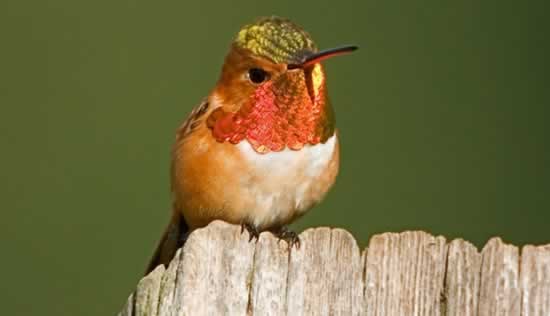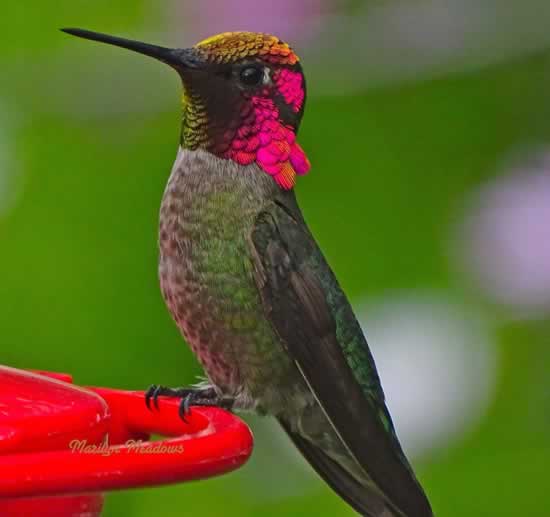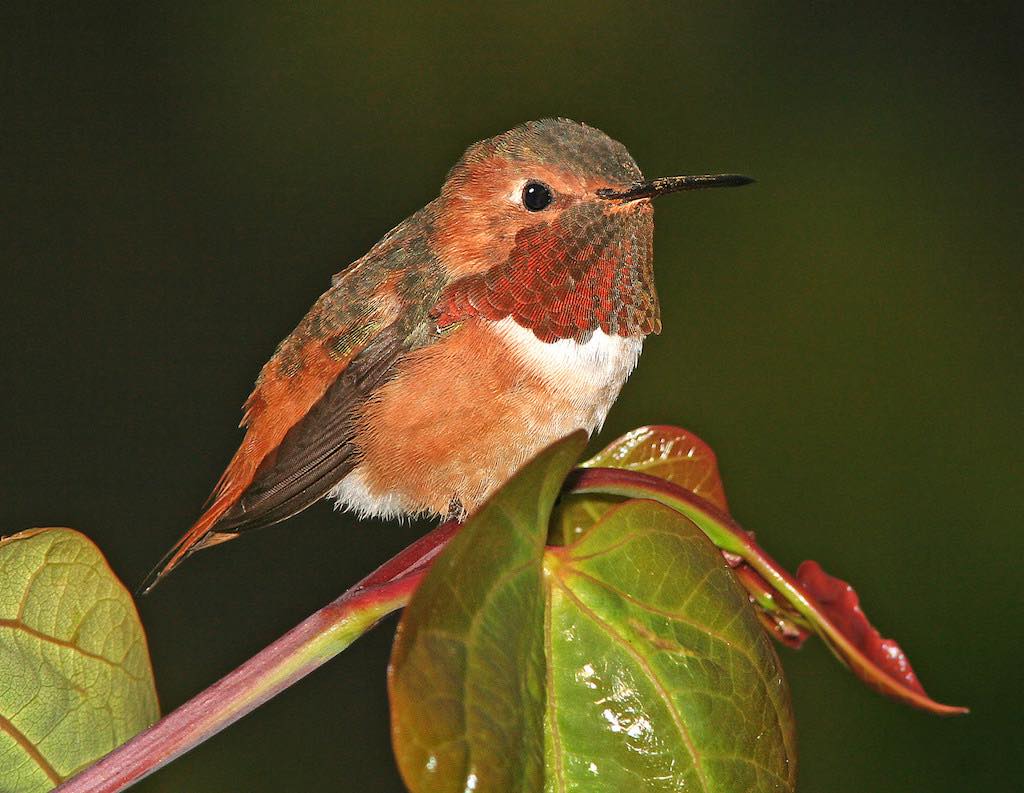Hummingbird Migration
 |
Many hummingbirds spend the winter in Central America or Mexico, and migrate north to their breeding grounds in the southern United States and western states as early as February, and to areas further north into Canada later in the spring. The first arrivals in spring are usually males.
Some, however, do not migrate, in areas like California and the upper Pacific coast, and the countries of Central America and South America.
The Migration Triggers
Although there are differing views in the birding community as to what triggers the start of migration, it is generally thought that hummingbirds sense changes in daylight duration, and changes in the abundance of flowers, nectar and insects. Instinct also plays a role in making the decision to migrate.
Making the Trip
During migration, a hummingbird's heart beats up to 1,260 times a minute, and its wings flap 15 to 80 times a second.
To support this high energy level, a hummingbird will typically gain 25-40% of their body weight before they start migration in order to make the long trek over land, and water.
They fly alone, often on the same path they have flown earlier in their life, and fly low, just above tree tops or water. Young hummingbirds must navigate without parental guidance.
Hummingbirds fly by day when nectar sources such as flowers are more abundant. Flying low allows the birds to see, and stop at, food supplies along the way. They are also experts at using tail winds to help reach their destination faster and by consuming less energy and body fat.
Research indicates a hummingbird can travel as much as 23 miles in one day. However, during migration they may cover up to 500 miles at a time. Their average speed in direct flight is in the range of 20-30mph, and up to three times that fast during courtship dives.
The spring migration can be hard on the hummingbird population as they move north from their winter homes in southern Mexico and Central America.
Stops along the way may be for a few minutes, or a few days at more favorable locations with abundant food supplies.
Strong cold fronts moving south over the Gulf make flying difficult as the birds deal with headwinds and heavy rain, over long distances with no shelter. Food is non-existent over the open waters.
First arrivals in the spring, usually males, can be seen in Texas, Louisiana and other sites along the Gulf Coast in late January to mid-March.
As the spring progresses, sightings are reported further north, even into Canada.
We typically track the spring hummingbird migration from late-January into May of each year, with the help of our viewers as they submit their first hummingbird sightings in their areas. We also track sightings in the summer and fall.
2025 Hummingbird Spring Migration Map (Final)
|
|
|
Hummingbird 2025 Fall Sightings Map
|
|
|
Creatures of Habit?
Hummingbirds are known to return to the same location from one year to the next, even to the same feeder!
Hummingbirds ARE Creatures of Habit! First Ruby-throat Sightings in our Gardens by Year |
|
| March 14, 2025 |
March 25, 2024 |
| March 25, 2023 |
March 22, 2022 |
| March 13, 2021 |
March 14, 2020 |
| March 17, 2019 |
March 12, 2018 |
| March 18, 2017 |
March 26, 2016 |
| March 22, 2015 |
March 21, 2014 |
| March 18, 2013 |
March 18, 2012 |
| March 19, 2011 |
March 23, 2010 |
| March 27, 2009 |
March 22, 2008 |
Ruby-throated Hummingbird Spring Migration
First arrivals in the spring, usually males, are back in Texas and Louisiana in late February to mid-March. In more northern states and Canadian provinces, first arrivals are not until April or May.
The map below shows the approximate spring migration arrival dates for Ruby-throated Hummingbirds in North America.
Arrival dates vary from year to year and from location to location, depending on a number of weather-related conditions and other environmental factors.
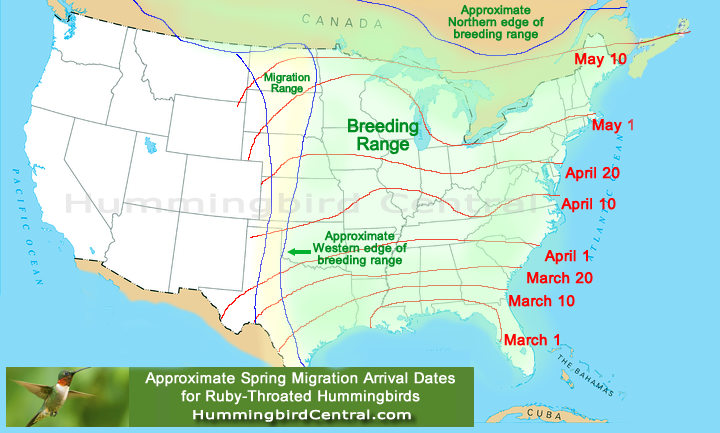 |
The Fall Hummingbird Migration
Many people want to know "When do hummingbirds migrate south?"
By August and September, hummingbirds are moving south, refueling their bodies in the early morning, traveling midday, and foraging again in the late afternoon to maintain their body weight.
August brings lots of activity, when we have 10-20 Ruby-throated hummingbirds at a time, with peak numbers in early September when we typically spot as many as 25-40 hummingbirds at a time as part of the fall migration. Most are Ruby Throats, with an occasional Rufous in the mix at the feeders.
Ruby-throats gather in Florida, Louisiana and along the South Texas coast in September in preparation for the final push to the south, either over the Gulf of Mexico or via an overland route through Mexico. Some Ruby-throats do spend the winter along the U.S. Gulf Coast, from Texas to Florida, and some along the southern Atlantic coastal regions.
Other species travel south down the Rocky Mountain chain into Mexico and Central America. Some species never migrate, and stay year-round in their habitats in Central America.
Fall 2024 Hummingbird Sightings |
| View sightings from the fall of 2024 submitted by our website viewers |
 |
And turn up your volume to enjoy their humming and chirping!
Winter Hummingbird Residents in the U.S.
Hummingbirds are overwintering on the Gulf Coast in greater numbers than in the past, and many can be found at feeders in South Texas and South Louisiana during mild winters.
 |
For example, in South Louisiana, several species are often spotted during the winter months, including the Ruby-throated, Rufous, Black-chinned, and Buff-bellied.
A few hummingbird species are year-round residents in the warmer Pacific coastal and southern desert regions of the United States. Among these are Anna's hummingbird, a common resident from California inland to Arizona and north to British Columbia.
Migration Patterns of Other Hummingbird Species
Of the four Pacific Northwest hummingbirds, Anna's is the only one that doesn’t always migrate south to warmer areas in winter.
The Continental Divide is host to the greatest number and diversity of migrating hummingbirds. A nearly constant high pressure dome called the “Great Basin High” features winds that rotate clockwise and that are followed by the hummingbirds. This provides consistent tail winds to support migration.
Rufous, Calliope, and Black-chinned Hummingbirds migrate north up the valleys and along the foothills of the Pacific slopes of the western United States, sipping nectar from spring flowers. This route is often called the ”Pacific Flyway” or “floral highway.” They reach the Northwest in early summer.
As the lowland flowers begin to die off, the birds move up in elevation to the alpine meadows of the Rocky Mountains and Sierra Nevada where the flowers are at full bloom. Then they follow the mountains of the Continental Divide south to Mexico in late summer and fall.
Rufous Hummingbirds
|
Rufous Hummingbirds are wide-ranging, and breed farther north than any other hummingbird, even into southeastern Alaska. They are often seen in the spring in California, summer in the Pacific Northwest and Alaska, and fall in the Rocky Mountains.
They spend their winter non-breeding months in southern Mexico especially in wooded areas in the state of Guerrero. Periodic Rufous sightings in winter are made along the U.S. Gulf Coast, and even into areas like South Carolina and Tennessee.
During their long migrations, Rufous Hummingbirds make a clockwise circuit of western North America each year.
They move up the Pacific Coast in late winter and spring, reaching Washington and British Columbia by May. As early as July they may start south again, traveling down the chain of the Rocky Mountains.
The map below shows the approximate migration and breeding ranges of the Rufous Hummingbird in North America.
Actual ranges vary from year to year and can depend on a number of weather-related conditions and other environmental factors.
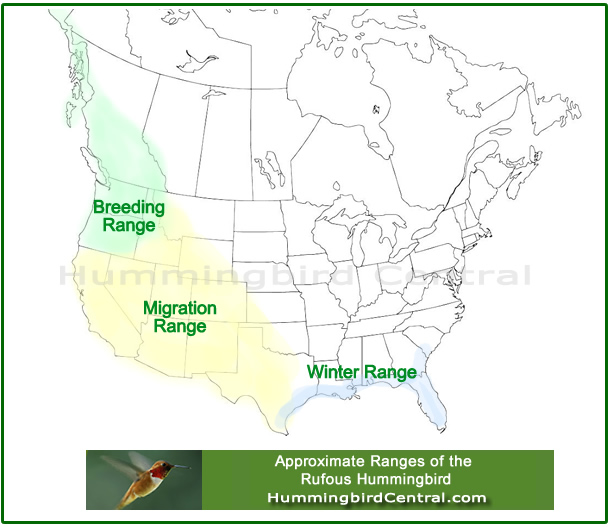 |
Anna's Hummingbird
|
Anna’s Hummingbird is one of the most common hummingbirds in its range. The species breeds from Vancouver, Canada south to northern Baja California and east through southern Arizona.
This hardy bird is a permanent resident along the Pacific Coast, staying through the winter in many areas where no other hummingbirds are present.
Anna's hummingbirds are found along the western coast of North America, from southern Canada to northern Baja California, and inland to southern and central Arizona, extreme southern Nevada and southeastern Utah, and western Texas.
They tend to be permanent residents within their range, and are very territorial. However, birds have been spotted far outside their range in such places as southern Alaska, Saskatchewan, New York, Florida, Louisiana and Newfoundland.
Anna's hummingbirds have the northernmost year-round range of any hummingbird. During cold temperatures, Anna's hummingbirds gradually gain weight during the day as they convert sugar to fat. In addition, hummingbirds with inadequate stores of body fat or insufficient plumage are able to survive periods of sub-freezing weather by lowering their metabolic rate and entering a state of torpor.
Costa's Hummingbirds
Costa's Hummingbirds are small North American desert birds that inhabit the western United States and Mexico, but are known to wander eastward and as far north as Alaska and Canada.
They are closely related to the Anna's Hummingbirds.
Their most common breeding areas are the Mojave Desert, Sonoran Desert and the San Joaquin Valley of California. Their wintering areas include southern California south into Mexico.
Allen’s Hummingbirds
|
Allen's Hummingbirds winter as far south as southern Mexico. They move north up the Pacific Coast in late winter, and south through the mountains in late summer.
A close relative of the Rufous Hummingbird, Allen's has a more limited range, nesting mostly in California.
Black-chinned Hummingbirds
The Black-chinned Hummingbird's breeding range stretches from southern British Columbia in Canada through Idaho and Nevada, south to northern Mexico, and from coastal California, Arizona through Texas, where they are relatively common spring and summer residents. They have also been reported in a number of other states.
They migrate to southern California, southern Arizona, and southern Texas or Mexico for the winter.
Calliope Hummingbirds
Calliope Hummingbirds primarily breed at high elevations in the mountains of northwestern United States and Canada into Alaska. In Canada, they occur from southern British Columbia and Alberta, and also south to Colorado, Nevada and southern California and Arizona.
During spring and summer they travel through Arizona and New Mexico and northern Mexico, to winter in southwestern Mexico as well as in Guatemala and Belize.
Broad-tailed Hummingbird
Broad-tailed hummingbirds migrate north in the spring leaving behind the non-migrant populations in central Mexico.
During spring migration, males reach southern Arizona in late February or early March, northern Arizona in early April, Colorado in late April to late May, Wyoming in mid-May, and Idaho/Southern Montana by late May.
After breeding, Broad-tailed Hummingbirds start their south-bound migration into their winter range in the highlands of Mexico south to Guatemala.
Popular Hummingbird Feeders This Year
 Aspects HummZinger Excel Hanging Hummingbird Feeder with Built-in Ant Moat |
 Pinched glass Hummingbird Feeder with built-in ant moat, pack of two feeders |
|
 Colorful hand-blown glass Hummingbird Feeder, 32oz, with Ant Moat, Hanging Hook, Rope, & Brush |
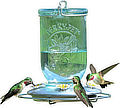 Perky-Pet 785-1SR Mason Jar Vintage Glass Hummingbird Feeder - 32oz Nectar Capacity |
|
 Mini Hummingbird Feeder with single flower, 4-Pack, 2.3oz |
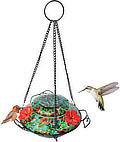 Nature's Way Glass Top-Fill Hanging Hummingbird Feeder |
|
|
||
 |
| About These Products
The Hummingbird Central website is a participant in the Amazon Services LLC Associates Program, an affiliate advertising program designed to provide a means for sites to earn fees by advertising and linking to Amazon.com and affiliated sites. Amazon offers a commission on products sold through their affiliate links. There is no additional cost to you. |




